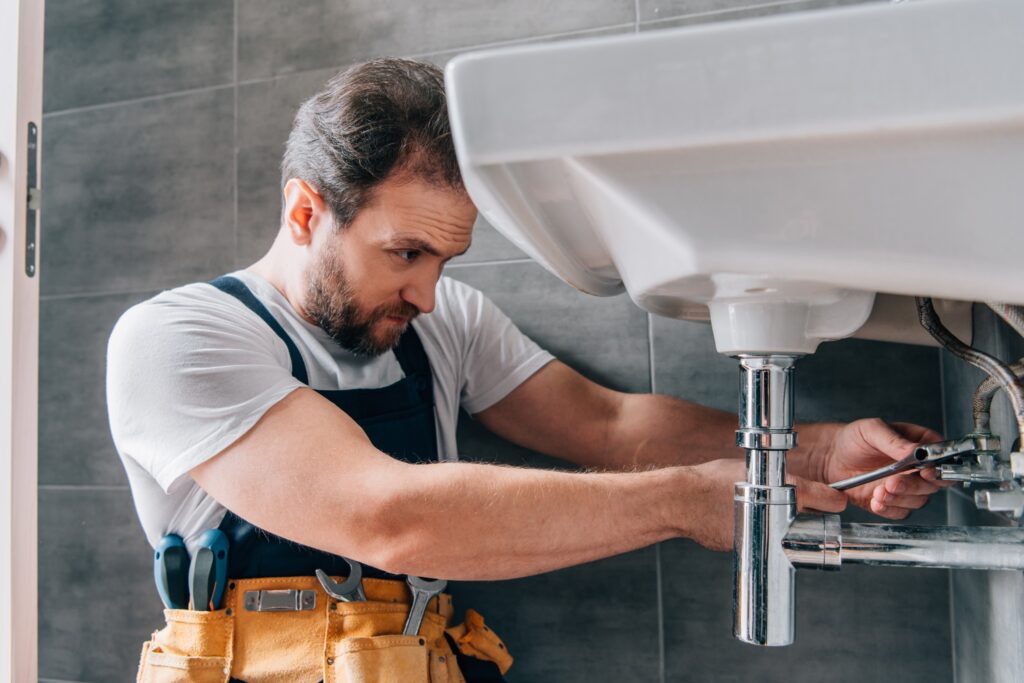Spring is a season of renewal and growth, but it’s also a critical time to check in on your home’s plumbing. With winter behind us and warmer days ahead, it’s the perfect opportunity to assess any potential damage and make sure everything is in working order.
Plumbing problems can be a serious headache if left unattended, which is why homeowners need to follow a comprehensive spring plumbing checklist. By doing so, you can prevent costly repairs and maintain the comfort of your home.
In this guide, we’ll walk you through the important steps to take, from checking your sump pump to inspecting outdoor faucets.
1. Inspect Your Sump Pump
Your sump pump plays a crucial role in keeping your basement dry during the rainy spring months. Start by pouring water into the sump pit to trigger the pump. Ensure the pump turns on, pumps water out, and then shuts off without any problems.
Dust and debris can hinder performance, so be sure to clean the inlet screen or the vent hole in the discharge pipe if it’s clogged. If you notice any abnormalities, it’s wise to have your pump serviced or consider an upgrade.
2. Clear Clogged Drains
Winter weather can bring a buildup of grease, hair, and other debris to your drains. Unclog your kitchen and bathroom drains using non-chemical methods like a snake or a plunger. Avoid using harsh chemicals, as they can corrode your pipes over time.
If you’re having trouble with clogs, you might need to call a professional for a deeper clean.
3. Check for Leaks
Check under sinks, behind toilets, and around any visible pipes for leaks. Leaks are not only wasteful but can lead to extensive water damage. Inspecting your home for leaks is an easy and effective way to catch problems early. Even tiny leaks can grow into more significant issues over time, so don’t ignore them!
4. Examine Toilets
Toilets can develop leaks or running issues that are not always obvious. Put a few drops of food coloring in the tank and wait about 10 minutes without flushing.
If you see the color in the bowl, you have a leak that needs to be fixed. Also, check for any movement or softness around the base, which could indicate a damaged seal.
5. Test Outdoor Faucets
After the threat of frost is gone, turn on your outdoor faucets. Inspect the spigots and pipes for leaks and proper functioning.
Leaky faucets not only waste water but can cause the water to seep into your home’s foundation, leading to potential structural damage. If you notice any issues, tighten connections or replace the faucet if necessary.
6. Clean Your Gutters and Downspouts
Gutters and downspouts are directly tied to your home’s plumbing system, as they control the flow of water around your foundation.
Clear away any debris such as leaves and twigs that accumulated during the winter. Check that the downspouts are clear, and consider installing a downspout extension to direct water away from your home’s foundation.
7. Test Your Water Pressure
Low water pressure can be a nuisance, indicating a problem with your plumbing system. Make sure all faucets indoors and outdoors have consistent and strong water pressure.
If there are any inconsistencies, you may need to clean the aerators or check for issues with your lines.
8. Inspect the Water Heater
Your water heater works particularly hard during the winter to provide you with hot water. Sediment can collect and harden in the bottom of the tank, reducing the heater’s efficiency. Flush the tank to remove any sediment buildup and check for rusty spots on the tank or the floor, which could signal a leak.
9. Consider a Backflow Prevention Device
With spring comes a change in the potential direction of water flow, which can increase the risk of backflow in your pipes. Installing a backflow preventer can help keep your water supply safe from contaminants. If you already have one, it’s time to ensure it’s in good working condition and maintained according to regulations.
10. Prepare Your Home for Vacancy
If you’re going on vacation during spring, take the necessary precautions to avoid potential plumbing issues while you’re away.
Turn off the main water supply, set the thermostat to a suitable temperature to prevent freezing, and consider draining your system. Additionally, have someone check on your home periodically if possible.
Summing Up!
By meticulously adhering to this comprehensive spring plumbing checklist, you are proactively ensuring the longevity and efficiency of your home’s plumbing system. Don’t forget to schedule routine inspections and consider opting for an emergency drain cleaning service to prevent any unexpected issues.
Regular maintenance not only safeguards your property from damage but also ensures that your family is provided with clean, safe, and reliable water.
Don’t neglect these essential home care tasks—your plumbing will thank you, and so will your wallet. After all, when it comes to maintaining your home, an ounce of prevention is worth a pound of cure.
About Us
If you are looking for a professional agency to help you install or replace your water filtration system in Florida, Henry Plumbing is where you should call. We have been helping the residents of Punta Gorda since the 1970s.
Our services include water testing, plumbing, water heater repairs, installation, and more. We also offer emergency plumbing services to our customers. You can contact us at (941) 661-7398 or request an appointment here.

